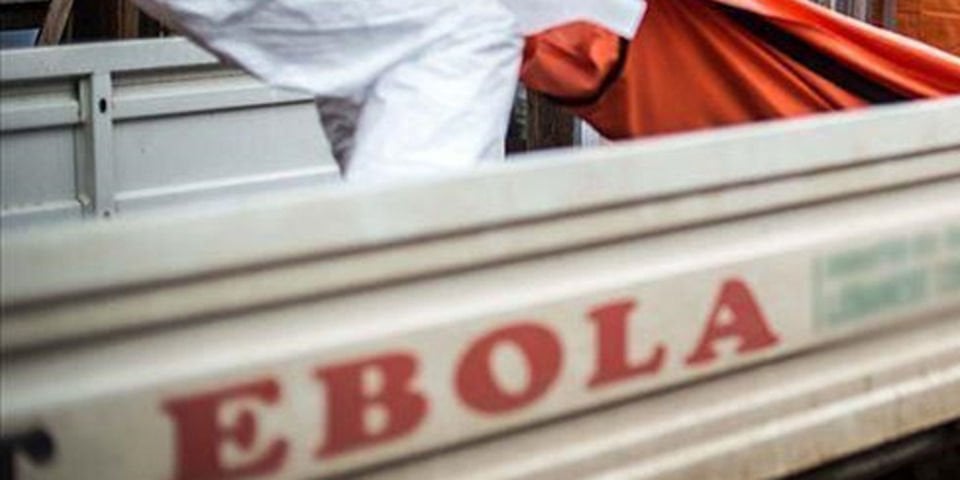Prime
Ebola spreads to more areas

What you need to know:
- Mubende District, the epicentre, lies on a major highway that leads into Kampala from the Democratic Republic of the Congo (DR Congo). It has busy trading places and the gold mine on one side is very close to where the epicentre is, according to Dr Kyobe.
Confirmed and suspected cases of Ebola Virus Disease (EVD) have been reported in Kampala, Kisoro, Kakumiro, Mubende, and Kyegegwa districts as the disease spreads, information from the response team indicates.
Health authorities have urged the public to adhere to preventive measures and report people with symptoms, saying samples from the suspected cases have been taken to Uganda Virus Research Institute (UVRI) for testing.
According to the Health ministry, there were 31 confirmed and suspected cases as of Saturday, a sharp spike from the seven cases registered on Tuesday when the outbreak was confirmed. The total confirmed and suspected Ebola deaths has also increased exponentially from one to 19.
Dr Henry Kyobe, the Ebola incident commander, said the majority of the cases are in Mubende, the epicentre. The sub-counties of Madudu, Kiruuma, and Kasambya, have reported one or more confirmed and or suspected cases of Ebola.
In Kyegegwa, at least six suspected cases, one suspected Ebola death and 20 contacts of victims have been listed and are being followed.
While in Kisoro, a district 413 kilometres away from Mubende, two suspected cases have been reported, which if confirmed will mean the epidemic could have spread widely. Perhaps more troubling is the one suspected Ebola death in Kampala, a district more than 140 kilometres from Mubende with a huge day and night population.
Dr Daniel Okello, the head of public health services at the Kampala Capital City Authority, said the sample from the person suspected to have died of Ebola in Kansanga has been taken to UVRI for testing.
Dr Kyobe, who is also the deputy director of Uganda National Institute of Public Health (UNIPH) in the Health ministry, and Dr Issa Makumbi, the director of the Public Health Emergency Operations Centre (PHEOC), warned that cases may continue to rise if communities do not cooperate with health workers.
Ebola ‘ground zero’
Mubende District, the epicentre, lies on a major highway that leads into Kampala from the Democratic Republic of the Congo (DR Congo). It has busy trading places and the gold mine on one side is very close to where the epicentre is, according to Dr Kyobe.
Dr Makumbi said there was a delayed response because health authorities didn’t expect the outbreak to happen in Mubende. With hindsight, he noted that private facilities were not very vigilant. The outbreak is suspected to have occurred around the start of September, meaning the disease was detected and the outbreak confirmed after around two weeks when it was spreading.
The UNIPH deputy director warned that Ebola infections may double if the response is not well coordinated.
“The public should report anybody with the signs. There is a toll-free number—0800-100-066—and we can come and pick the person to curb the spread,” he said.
The outbreak was confirmed about one month after North Kivu—the part of the DR Congo bordering Uganda—reported an outbreak of Ebola. Mubende is more than 520 kilometres from North Kivu.
According to the World Health Organisation (WHO), the case in North Kivu was genetically linked to “the 2018-2020 outbreak in North Kivu, Ituri and South Kivu provinces (Ebola Zaire strain) and not a new spillover event.”
Blame game?
Dr Makumbi and Dr Kyobe blamed the private facilities for a low index of suspicion, which delayed the detection and declaration of the outbreak.
“Most of the cases were moving from one private hospital to another and the facilities were not very vigilant. They couldn’t detect it early, but also one of the problems is that the signs of Ebola are not very specific. You could think someone has malaria or diarrhoea,” Dr Makumbi argued.
He added: “They didn’t suspect very quickly. We are going to find the source. There are a number of areas there which could be harbouring bats which could be carriers of the virus..”
The incident commander explained that the Sudan Ebola virus outbreak is happening about 10 years since the last outbreak triggered by the same in 2012.
Kakumiro struggles
The Kakumiro District Ebola taskforce said they are struggling to get space in health facilities to establish isolation centres.
The Kakumiro deputy Resident District Commissioner, Mr Monday Ernest Kaliisa, said they are at high risk because of the frequent business and transport interactions among the communities of the two districts.
‘‘We have information that there is a person who reportedly died and was an Ebola suspect and was buried in Kakumiro District,” Mr Kaliisa told Sunday Monitor, adding, “We are investigating the incident. We have our village health teams who have been alerted.’’
The fears among the locals have been raised by an incident in which one of the suspected Ebola persons succumbed to Ebola in Madudu Sub-county, Mubende District and was buried in Lubaya Village, Kyabasaija Sub-county, Kakumiro District nearly a week ago.
The Kakumiro District Senior health educator, Mr Robert Senteza, said by Saturday they had not established any isolation centres in the health facilities.
‘‘We are planning to organise waiting places at Kakumiro, Kakindo and Kyabasaija health facilities, we are looking for tents,’’ he said.
Reporting by Tonny Abet, Daniel Wandera and Alex Tumuhimbise




